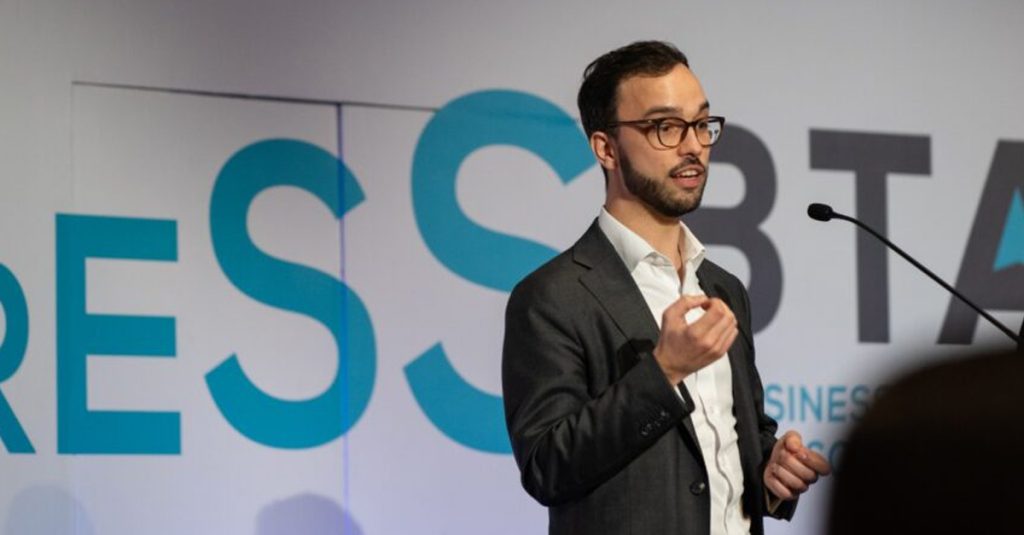British Airways (BA) and American Airlines are aligning their visions regarding New Distribution Capability (NDC) technology. Although they embark on this journey together, their strategies to reach the end goal exhibit divergence.
BA’s distribution chief, Sam Robinson, highlighted this at a recent industry conference, elaborating on how both airlines share the same end vision despite varying approaches. This synchronised yet individualized strategy reflects the evolving landscape of airline distribution.
Alignment and Divergence in NDC Strategies
British Airways (BA) and American Airlines are collaboratively navigating the evolution of New Distribution Capability (NDC) technology. While the two share a common vision, their strategic paths show divergence. According to BA’s distribution chief, Sam Robinson, both airlines are aligned in their ultimate goals but have distinct methods to achieve them. Robinson elaborated on this at the Business Travel Association conference, stating, “We’re on the same journey… We have the same vision but slightly different strategies.” The partnership highlights a unique blend of collaboration and individual strategy implementation, aiming to enhance the way airline fares and services are distributed globally.
American Airlines’ Progressive Shift
Last April, American Airlines took a significant step by withdrawing over 40% of its fares from traditional Global Distribution Systems (GDSs), opting to make this content exclusively available via NDC channels. This strategic shift underscores the airline’s commitment to modernising distribution, emphasising its approach of favouring preferred channels. As part of its latest move, American Airlines will stop awarding loyalty points to bookings made through non-NDC channels starting in May, further encouraging the adoption of NDC by travel agencies.
This move aims to streamline operations and enhance customer engagement by leveraging advanced distribution methodologies. It’s a bold strategy designed to align with evolving technological demands in the airline industry.
British Airways’ Steady Progress
Upon launching its NDC initiative in 2015, British Airways faced considerable challenges due to the inadequacies in its technological infrastructure.
Robinson admitted that the initial launch did not meet expectations. However, he was optimistic about current developments, emphasising partnerships with technology providers like Amadeus and Travelport. “We’ve made it mandatory that technology providers deliver on servicing [NDC bookings] before we go live,” he asserted. This partnership is pivotal to ensuring that British Airways can offer comprehensive content and services efficiently across different digital platforms.
The airline’s determination to rectify past shortcomings and adapt to contemporary distribution trends is evident. The collaboration with twenty providers has enabled British Airways to enhance its service offerings significantly, creating a more robust NDC framework.
Industry Perspectives and Future Outlook
Steven Love, commercial director at Amadeus UK and Ireland, highlighted the revolutionary potential of NDC, suggesting that it could dramatically transform how travel is purchased. Love pointed out that the International Air Transport Association (IATA) has set aggressive targets to achieve 30% NDC distribution among leading members by 2025 and full implementation by 2030. He remarked, “We believe we’ll see a huge acceleration over the next two to three years. The future will be very different. We have to accept it.”
However, the challenges of universal NDC adoption cannot be overlooked. Saad Hammad, CEO of Key Travel, described NDC as “a half-baked solution being forced on travel management companies (TMCs).” His scepticism reflects broader industry concerns about the realistic trajectory and adaptability of NDC across various platforms.
The Technological Backbone: NDC’s Core
NDC stands as a technological standard established by IATA aimed at distributing fares and ancillary content to intermediaries through online APIs (Application Programming Interfaces).
This approach is expected to offer airlines more control over their distribution and the ability to provide more personalised and dynamic pricing models. The deployment of such technology is anticipated to enhance consumer experience by ensuring real-time information and pricing flexibility.
While the prospects are promising, implementation hurdles remain. Integrating NDC into existing systems requires significant investment and coordination among airlines, GDSs, and travel agencies.
Collaborative Efforts and Industry Call to Action
Sam Robinson of British Airways has called on industry stakeholders to engage with NDC technology actively. He urged members of the Business Travel Association to experiment and communicate any inefficiencies they encounter. “We can develop [NDC] capability and content, but we need all of you. We want you to give NDC a go and tell us where it’s not working,” Robinson said. This open dialogue is essential for refining NDC technology and ensuring it meets industry needs.
The push for collaborative progress is crucial. Without feedback and participation from all market players, the potential for NDC to transform airline distribution systems could be stunted.
Anticipating the Shift in Airline Distribution
As the airline industry progresses towards a more technologically integrated future, both British Airways and American Airlines are at the forefront of implementing NDC.
This transition signifies a broader shift in airline distribution strategies, focusing on control, efficiency, and customer-centric offerings. The journey towards full NDC integration is complex, requiring substantial collaboration and technological advancement.
In conclusion, the journey towards implementing NDC technology reflects both collaboration and strategic divergence between British Airways and American Airlines. Despite challenges, the interplay of innovation and industry-wide cooperation underscores a significant transformation in airline distribution strategies.

